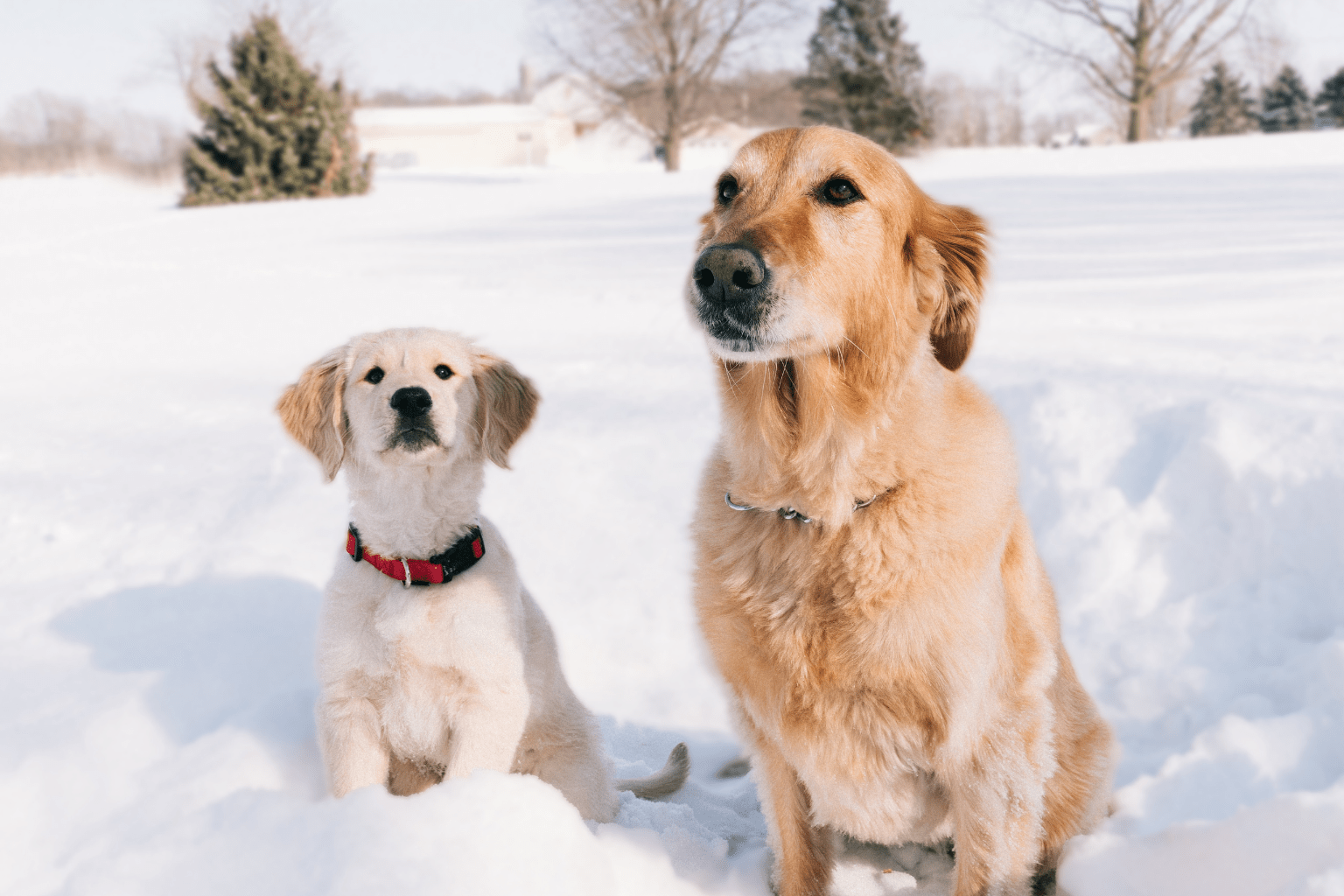Key Takeaways
- Vestibular syndrome in dogs causes sudden balance issues such as head tilting and dizziness.
- Treatment for vestibular syndrome is urgent to help dogs regain their stability.
- Combining veterinary care with natural support can aid in recovery.
- Most dogs recover their balance within days to weeks with proper treatment.
Table of Contents
- What Is Vestibular Syndrome in Dogs? – The Basics Every Pet Parent Needs
- Spotting the Signs, How Vestibular Disease Shows Up in Our Dogs
- What Causes Vestibular Syndrome in Dogs? – From Ear Infections to 'Old Dog Vestibular'
- How Is Vestibibular Disease Diagnosed? – The Vet's Perspective and What You Can Do at Home
- Treatment Options for Vestibular Syndrome in Dogs – From Vet Care to Natural Support
- Recovery & Home Care – Giving Your Dog the Best Chance to Bounce Back
- Troubleshooting – Common Challenges and How to Solve Them
- Understanding Different Types of Vestibular Disease
Vestibular Syndrome in Dogs: Natural Treatment, Real-Life Support, and Tips for Lifelong Balance
When your dog suddenly can't walk straight, tilts their head, or seems dizzy and confused, vestibular syndrome in dogs treatment becomes an urgent priority. This balance disorder affects thousands of dogs yearly, but with the right combination of veterinary care and natural support, most pets recover their steady footing within days to weeks.
Unlike many conditions that develop gradually, vestibular syndrome strikes suddenly, often leaving pet parents feeling helpless as their once-coordinated companion stumbles and falls. The good news? Most cases respond well to supportive care, and gentle homeopathic remedies can help maintain comfort during recovery without harsh side effects.
For dogs experiencing vestibular symptoms due to ear issues, Dog & Cat Ear Infection & Itch Relief Remedy can provide targeted support, while those with mobility challenges may benefit from the Dog & Cat WALK-EASY® Joint & Hip Pain Relief Remedy to help them regain confidence as they recover.
What Is Vestibular Syndrome in Dogs? – The Basics Every Pet Parent Needs
Vestibular syndrome disrupts your dog's inner balance system, causing sudden coordination problems that can look frightening but are often temporary. The vestibular system, located in the inner ear and connected to the brain, controls balance, spatial orientation, and smooth movement.
Two main types affect dogs: Peripheral vestibular disease stems from inner ear problems, while central vestibular disease involves brain or neurological issues. Peripheral cases are more common and typically have better outcomes, especially in older dogs experiencing "idiopathic vestibular syndrome" with no identifiable cause.
Is vestibular syndrome fatal? Rarely. Most dogs improve significantly within 72 hours, though some retain a mild head tilt permanently.
Senior dogs and certain breeds like German Shepherds face higher risk, but vestibular episodes can affect any age. The sudden onset often mimics stroke symptoms, making professional diagnosis crucial for proper treatment for vestibular syndrome in dogs.
Spotting the Signs, How Vestibular Disease Shows Up in Our Dogs

Vestibular syndrome announces itself dramatically. The most obvious sign is a sudden head tilt toward the affected side, accompanied by loss of balance and a characteristic "wobbly walk" where dogs lean or circle in one direction.
Primary symptoms include:
- Sudden head tilt (persistent, not occasional)
- Loss of balance, stumbling, falling over
- Nystagmus, rapid, jerking eye movements
- Vomiting and nausea from dizziness
- Wide-legged stance for stability
- Preference for lying on hard surfaces
Rachel, one of our community members, first noticed her senior Collie Bailey tilting his head while eating breakfast. Within hours, Bailey was circling and couldn't navigate stairs safely. The rapid progression helped her veterinarian quickly identify vestibular syndrome rather than a gradual neurological decline.
Emergency signs requiring immediate vet care: facial drooping, inability to stand, severe vomiting preventing hydration, or symptoms worsening after 48 hours. These may indicate central vestibular disease or complications requiring urgent intervention.
What Causes Vestibular Syndrome in Dogs? – From Ear Infections to 'Old Dog Vestibular'
Understanding the root cause shapes treatment approach and recovery expectations. Peripheral causes affecting the inner ear include chronic ear infections, trauma, tumors, hypothyroidism, and certain medication side effects, particularly some antibiotics that damage inner ear structures.
Central causes involve brain-related issues like tumors, strokes, inflammatory brain disease, or toxin exposure. These cases typically show additional neurological symptoms beyond balance problems and require more intensive veterinary management.
| Type | Common Causes | Typical Age | Recovery Timeline |
|---|---|---|---|
| Peripheral | Ear infections, trauma, idiopathic | Senior dogs (8+ years) | 3-14 days |
| Central | Brain tumors, stroke, inflammation | Any age | Weeks to months |
Idiopathic vestibular syndrome, the most common form in older dogs, occurs without identifiable cause and typically resolves on its own with supportive care. This "old dog vestibular disease" often looks severe initially but carries the best prognosis for complete recovery.
For more information on how joint issues can impact your dog's mobility, you may find this article on hip dysplasia in dogs signs and treatments helpful.
How Is Vestibular Disease Diagnosed? – The Vet's Perspective and What You Can Do at Home
Veterinary diagnosis begins with thorough neurological examination, checking eye movements, balance responses, and ear canal health. Your vet will test reflexes and observe gait patterns to distinguish peripheral from central vestibular disease.
Diagnostic tests may include: bloodwork to rule out thyroid issues or infections, ear examination with otoscope, and sometimes advanced imaging like CT or MRI for complex cases. Most straightforward vestibular episodes don't require expensive testing if symptoms fit typical patterns.
Before your vet visit, record symptom videos showing head tilt, walking patterns, and eye movements. Note any recent ear cleaning, medications, or trauma. This documentation helps veterinarians assess severity and track improvement during canine vestibular disease treatment.
For additional insight into why your dog may be limping or showing signs of discomfort, check out this resource on why is my dog limping: signs, causes, and treatments.
Questions to ask your vet: Is this peripheral or central vestibular disease? What's the expected recovery timeline? Are there any medications that could worsen symptoms? How can I keep my dog safe during recovery?
Treatment Options for Vestibular Syndrome in Dogs – From Vet Care to Natural Support

Conventional veterinary treatment focuses on supportive care and symptom management. Vets typically prescribe anti-nausea medications like meclizine or maropitant, along with IV fluids for dehydrated dogs. When bacterial ear infections are present, antibiotics become essential. However, many cases are idiopathic, meaning the underlying cause remains unknown and treating vestibular disease in dogs becomes about comfort and time.
Natural support complements veterinary care beautifully. For dogs experiencing stress and restlessness during their vestibular episode, our Pet Relax Anxiety & Calming Remedy can help promote a calm demeanor during this challenging time. Additionally, for dogs with mobility issues related to joint stiffness, WALK-EASY® Joint & Hip Pain Relief may support comfort and movement as they recover their balance.
Recovery typically begins within 48-72 hours, with most dogs showing significant improvement in balance and appetite. Max, a Golden Retriever from our community, regained his steady walk within five days when his owner Wendy combined her vet's supportive care with natural remedies. The gentle approach meant no additional side effects during an already challenging time.
| Treatment Approach | Timeline | Best For | Administration |
|---|---|---|---|
| Anti-nausea medication | Immediate relief | Severe vomiting | Pills/injection |
| IV fluids | Same day | Dehydration | Veterinary clinic |
| Natural homeopathic support | 2-3 days | All cases, ongoing comfort | Pills/pellets |
| Antibiotics | 3-7 days | Confirmed infections | Pills/liquid |
The key to successful canine vestibular disease treatment lies in combining professional veterinary assessment with gentle, natural support that doesn't add stress to an already disoriented dog. Never replace emergency veterinary care with natural remedies alone, but these gentle approaches provide valuable support throughout the recovery journey.
For dogs with recurring ear issues, the Dog Ear Health & Infection Relief Bundle offers comprehensive support for itching, redness, and infection, while the Dog Joint Health & Mobility Bundle can help maintain strength and stability during the recovery process.
Recovery & Home Care – Giving Your Dog the Best Chance to Bounce Back
The first 72 hours are critical for both comfort and safety. Create a quiet, padded area away from stairs and sharp furniture edges. Most dogs experience their worst symptoms during this initial period, but improvement typically becomes noticeable by day three. Keep food and water bowls elevated and easily accessible, as bending down can worsen dizziness.
Mobility support makes a dramatic difference in recovery confidence. Lift harnesses help larger dogs navigate necessary trips outside, while non-slip mats prevent falls on smooth floors. Rachel, who manages multiple rescue dogs, found that her senior Collie Bailey recovered faster when she created clear, obstacle-free pathways throughout the house.
Gentle encouragement beats forcing activity. As balance improves, short, slow walks on grass provide better traction than concrete. Many dogs naturally seek out cool, hard floors during recovery, this helps them feel more stable than soft bedding that shifts under their weight.
Recovery Timeline Expectations
Days 1-3: Severe symptoms, focus on safety and comfort
Days 4-7: Noticeable improvement in balance and appetite
Weeks 2-3: Most dogs return to normal activity levels
Long-term: Some dogs retain mild head tilt but live normally
For more tips on keeping your senior dog active and happy during recovery, see these fun things to do with senior dogs.
Troubleshooting – Common Challenges and How to Solve Them
Even with excellent care, vestibular recovery rarely goes perfectly smooth. Here's how to handle the most frequent obstacles pet parents encounter.
When Your Dog Won't Walk or Keeps Falling
Problem: Dog refuses to stand or falls repeatedly when attempting to walk.
Solution: Use a towel under their belly as a sling for support, or invest in a proper lifting harness. Add non-slip rugs along their walking path and encourage only short distances initially.
Persistent Vomiting and Loss of Appetite
Problem: Dog continues vomiting beyond 24 hours or refuses all food and water.
Solution: Offer ice chips for hydration and contact your vet about anti-nausea medication. Never force feeding, but try hand-feeding small amounts of bland, room-temperature food.
Medication Refusal
Problem: Dog spits out pills or becomes stressed during medication time.
Solution: Hide pills in small amounts of peanut butter, cream cheese, or pill pockets. For natural remedies like homeopathic pellets, they can be dissolved in a small amount of water and given via syringe if necessary.
Emergency Signs: Contact your vet immediately if symptoms worsen after 48 hours, if your dog cannot keep water down, shows signs of severe pain, or develops facial drooping or difficulty breathing.
Anxiety and Confusion
Gary's Labrador Lucy became increasingly anxious as her dizziness persisted, panting and pacing despite her unsteady gait. Consistent, calm verbal reassurance and staying physically close helped reduce her stress levels significantly.
Some dogs benefit from calming aids during recovery. Natural options like Pet Relax Anxiety & Calming Remedy may help dogs stay relaxed while their vestibular system heals, supporting overall comfort during this challenging time.
Understanding Different Types of Vestibular Disease

Not all vestibular episodes are the same. Understanding the differences helps set realistic expectations for treatment for vestibular syndrome in dogs and recovery timelines.
| Type | Main Cause | Typical Signs | Recovery Timeline | Age Most Affected |
|---|---|---|---|---|
| Peripheral (Ear-related) | Inner ear infection, trauma | Head tilt, circling, nystagmus | 1-3 weeks | Any age |
| Central (Brain-related) | Stroke, tumor, infection | Severe imbalance, altered consciousness | Variable, often longer | Senior dogs primarily |
| Idiopathic (Unknown) | No identifiable cause | Sudden onset, often mild | Days to 2 weeks | Senior dogs (8+ years) |
For a deeper dive into the science and clinical management of vestibular syndrome in dogs, you can review this comprehensive veterinary study.
Another valuable resource is this recent review on vestibular disorders in dogs, available here.
Not a substitute for professional veterinary advice.
Frequently Asked Questions
What are the common signs and symptoms of vestibular syndrome in dogs that pet owners should watch for?
Look for sudden balance problems like head tilting, dizziness, stumbling, or walking in circles. Dogs may also seem disoriented, have rapid eye movements, or show nausea. These signs often appear quickly and can be alarming but usually signal vestibular issues.
How is vestibular syndrome in dogs diagnosed and what role does veterinary care play in treatment?
A vet diagnoses vestibular syndrome through a physical exam and neurological tests to rule out other causes. Imaging or ear checks may be needed. Veterinary care is essential to identify underlying problems and manage symptoms safely while supporting recovery.
What natural treatments and home care strategies can support a dog's recovery from vestibular syndrome?
Creating a calm, safe space with minimal stairs and sharp edges helps prevent injury. Gentle massage, hydration, and natural calming remedies like Peaceful Paws can ease stress. Targeted homeopathic support for ear health or joint comfort may also aid your dog’s comfort alongside vet care.
Are there different types of vestibular syndrome in dogs, and do they affect the prognosis or treatment approach?
Yes, peripheral vestibular syndrome usually involves the inner ear and often has a better outlook, especially in older dogs. Central vestibular syndrome affects the brain and may require more intensive care. Knowing the type helps guide treatment and expectations for recovery.



